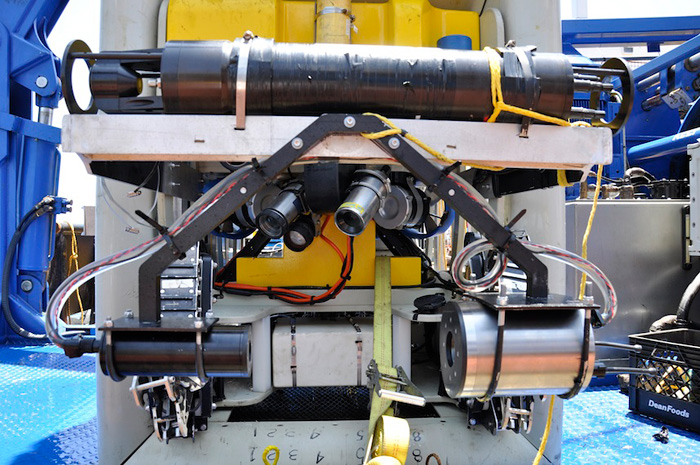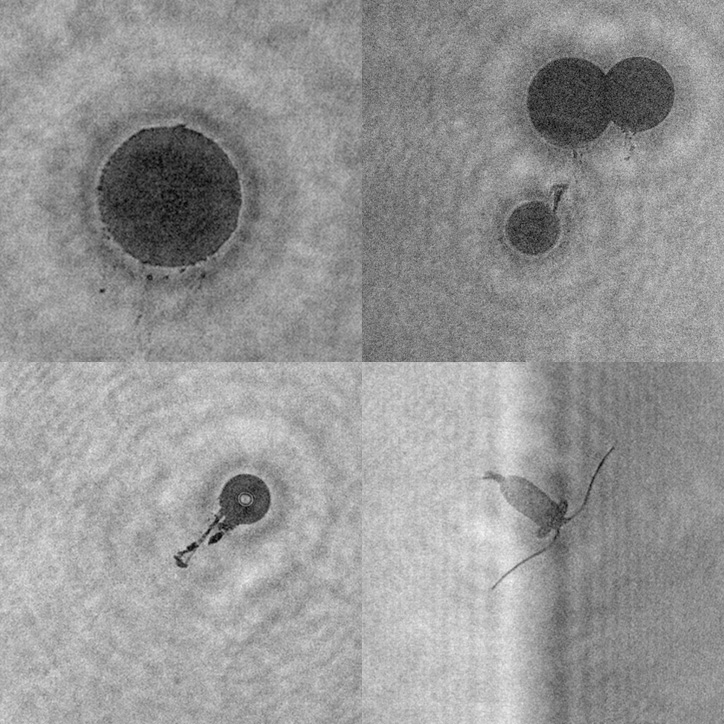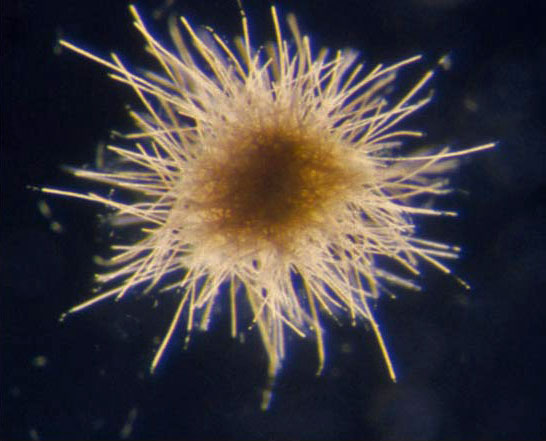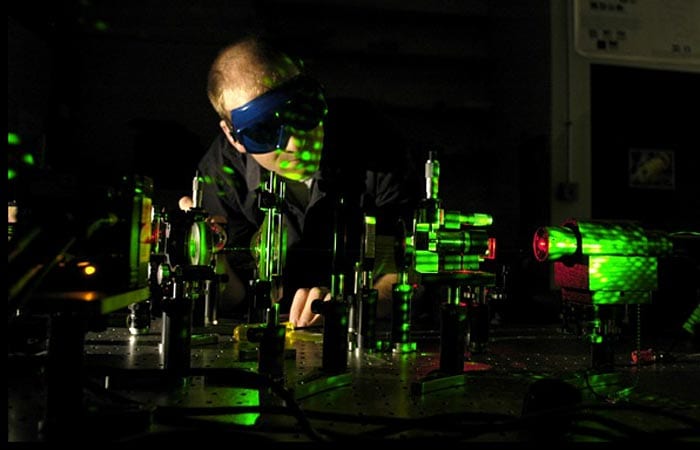From Plankton to Oil Droplets
Deepwater Horizon, 2010
Principle Investigators: Cabell Davis, Nick Loomis
WHOI scientists deployed to the Gulf instruments designed to identify and measure the tiny plants and animals that live in the open ocean within weeks after the Deepwater Horizon oil spill began. In this case, however, their purpose was to measure the size and distribution of oil droplets, information that is important to model the oil plume more accurately.
Biologist Cabell Davis and graduate student Nick Loomis developed a digital holographic camera system—the holocam—to identify and measure microscopic plants and animals that form the basis for much of the marine food chain. Soon after the oil spill began, they were called upon to use the holocam and another instrument, the digital autonomous video plankton recorder (DAVPR) to take images and measurements of oil droplets as well as suspended particles (marine snow), plankton, and the eggs and larvae of animals in the water column.
This information is essential to create a more accurate picture of how and where oil plumes disperse and move in the ocean. In theory, plumes composed of small droplets will drift through the water like a diffuse fog, whereas larger droplets will rise to the surface. Davis and Loomis also tracked the size change of oil droplets at different locations and times and watched as the location of the oil shifted with currents each day.
Davis has returned to the Gulf several times with both instruments and, in addition to tracking droplet size in discrete locations with the holocam, has also deployed the DAVPR over a wide area to look for changes to plankton that might signal broader changes to the Gulf ecosystem. Most recently he used the fast-tow VPR-II to conduct a high-resolution survey of the entire Gulf shelf from Florida to Texas. This instrument resulted in 3,500 vertical profiles of plankton and environmental variables along a survey track more than 3,000 miles long.
From Oceanus Magazine
July 25, 2006
Ocean Microscope Reveals Surprising Abundance of Life
Using a new automated digital underwater microscope called a Video Plankton Recorder, scientists can observe and count bacteria and other tiny organisms over wide stretches of the ocean depths.
Source: Oceanus Magazine
June 5, 2010
Holography and Oceanography
Now plankton have paparazzi, too. MIT/WHOI Joint Program student Nick Loomis has engineered a way to use holograms, or laser-generated three-dimensional images, to reveal private details of tiny plankton in seawater.
Source: Oceanus Magazine
Related Technology
Video Plankton Recorder (VPR)
An underwater video microscope system that that takes images of plankton and particulate matter as small as 50 microns and up to a few centimeters in size.




